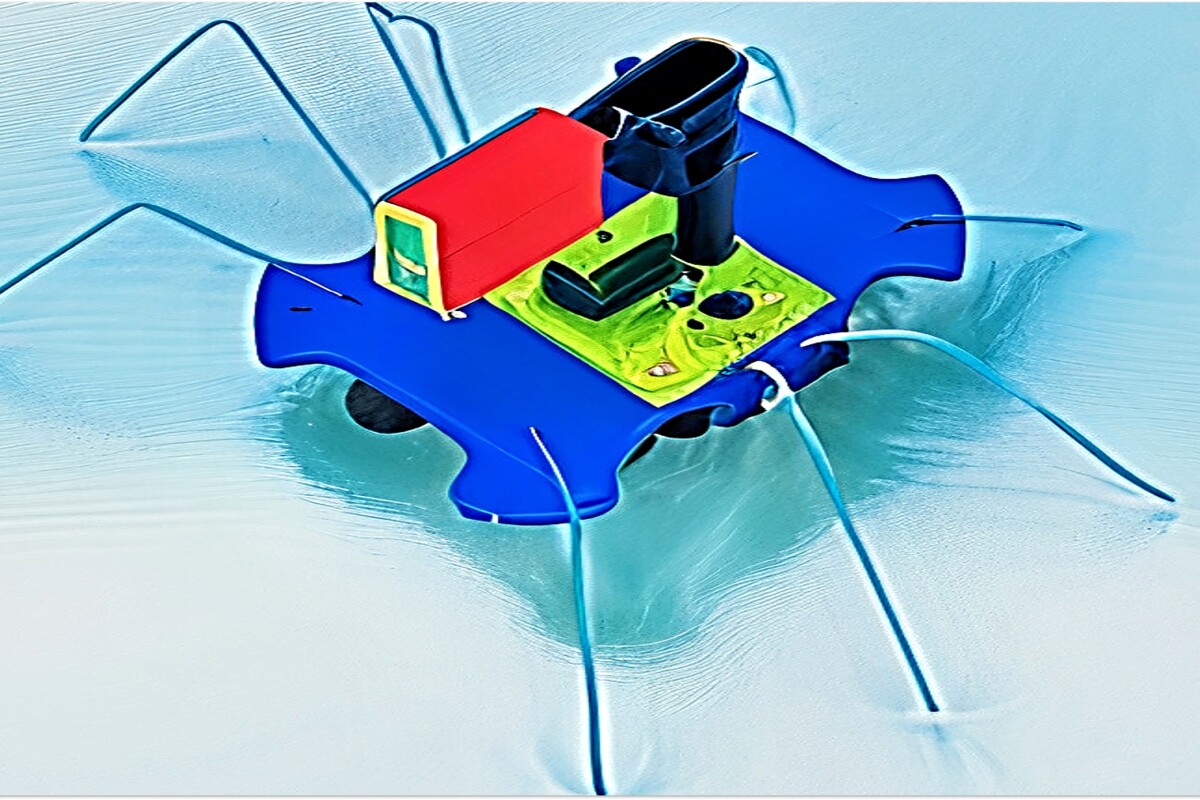Water-Skimming Ocean-of-Things Bugbots use Bacteria-Powered Fuel Cells

Binghamton University
Researchers have created prototype robot bugs equipped with sensors that replicate biological digestive systems to generate energy, use a Janus interface for a continuous nutrient supply, and glide across water like water striders.
In 2017, DARPA introduced a program to develop and deploy thousands of floating sensors to collect environmental data, including ocean temperature, sea conditions, and the movements of commercial vessels, aircraft, and marine mammals.
However, named the Ocean of Things, this project resembles the network of sensor-laden smart devices in the Internet of Things. According to the project page, data from these sensors will be uploaded to government-owned cloud storage for analysis. The Ocean of Things will support military operations and be accessible to research institutions and commercial entities.
Professor Seokheum Choi Develops Bacteria-Powered Aquatic Robot with Naval Research Funding
Professor Seokheum Choi from Binghamton University has been developing such a device for about a decade, with funding from the Office of Naval Research. Choi and his team have now created a small aquatic robot that skims the water’s surface and is powered by onboard bacteria rather than traditional energy sources like solar, kinetic, or thermal systems.
The team’s paper highlights ongoing efforts to develop self-sustaining robots that harness energy from their marine environment. These methods include using solar power, wave or current kinetic energy, osmotic potential from saline water, thermal gradients, and moisture-driven energy sources.
However, the researchers point out that the inconsistent availability of light and mechanical energy in marine environments, along with the limited energy yields from salinity gradients, thermal differences, and moisture, pose significant challenges. These limitations make it difficult to ensure the reliable and continuous operation of aquatic robots based solely on current energy harvesting technologies.

Binghamton University
New Powerplant Uses Microbial Fuel Cell with Bacillus subtilis to Convert Organic Matter into Electricity
The new system’s powerplant utilizes a microbial fuel cell that features spore-forming Bacillus subtilis bacteria. This mini generator, inspired by biological digestion, converts organic matter into electricity through catalytic redox reactions.
“When conditions are ideal, the bacteria become active and generate power, but if conditions are poor—such as extreme cold or lack of nutrients—they revert to spores,” Choi explained. “This allows us to extend the operational life.”
The fuel cell’s anode is made from polypyrrole-coated carbon cloth, chosen for its excellent conductivity and ability to support bacterial growth. The cathode, also carbon cloth, is coated with polypyrrole and platinum to enhance oxygen reduction. A Nafion 117 membrane is used for selective proton transfer.
The powerplant includes hydrophobic and hydrophilic surfaces to facilitate the unidirectional flow of organic substrates from seawater, providing nutrients to the bacterial spores.
Single Fuel Cell Delivers 135 µW cm-2; Six-Unit Array Produces Nearly a Milliwatt, Powering Motor and Sensors
While a single fuel cell setup achieved a maximum power density of 135 µW cm-2 and an open-circuit voltage of 0.54 V, scaling up to a six-unit array produced nearly a milliwatt of power. Though modest, this output is sufficient to power the small DC motor and onboard sensors.
To ensure smooth movement, the robot uses the motor’s rotational force to propel itself across the water without directly pushing against it, with its hydrophobic design aiding buoyancy. Additionally, the robot’s legs are coated with a hydrophobic layer to help it glide across the water’s surface like a water strider.
The goal is to deploy fleets of small data collectors as needed, rather than being restricted to a single location throughout their operational life.
“Although this research successfully shows that self-sustaining mobility on water surfaces can be achieved using an integrated MFC array, practical applications such as localization, sensing, and signal processing for aquatic robots still need further development,” the team noted.
Additional work is required to assess long-term performance and adaptability to different environmental conditions. However, the current system demonstrates the viability of this innovative design.
Read the original article on: New Atlas
Read more: Robotic Faces Covered with Living Human Skin










